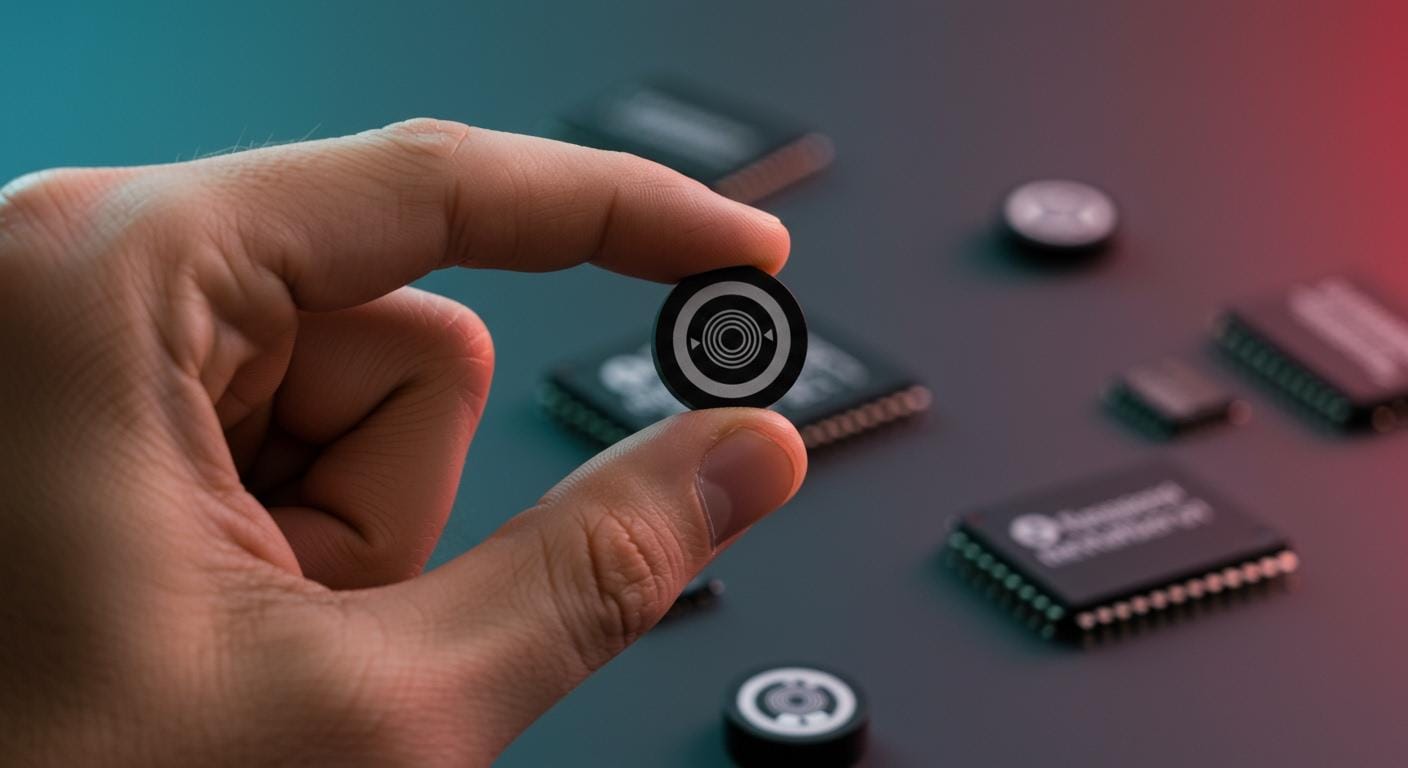Call us: +86-137-2353-4866
When people want the best force sensing resistors, they often choose reliable brands like SOUSHINE, Interlink, Tekscan, SparkFun, Adafruit, Flexiforce, and Sensitronics. Selecting a reputable brand helps individuals achieve better results, enhanced accuracy, and prolonged usage. Many businesses utilize force sensing technology for critical applications. Here are some ways they are employed:
| Industry | Primary Applications |
|---|---|
| Industrial Automation | Up/Down Controls, Motor Speed Control, Robotic Finger Tips |
| Healthcare | Infusion Pumps, Foot Gait Analysis, Bed Occupancy Detection |
| Transportation | Seat Occupancy Detection, Inventory Control |
| Wearable Applications | Athletic Apparel, Shoe Insoles, User Interface Controls |
People can explore these reliable brands to determine which one best meets their force sensing needs.
Table of Contents
Key Takeaways
Pick trusted brands like SOUSHINE, Interlink, and Tekscan for force sensing resistors. These brands are known to work well and last long. Think about what you need, like how strong or sensitive the sensor should be. Choose a sensor that fits your project best. Find brands that give good help and easy-to-read guides. This will make setting up and fixing problems easier. Make sure the sensors have certifications like ISO and CE. These show the sensors are safe and high quality. Compare prices and features to get the most for your money. Try out different products from many brands for your special project needs. Good sensors help your project work better and last longer. Check if the sensors are easy to buy when you need them.
Reliable Brands Overview
Top Force Sensing Resistors List
Some brands are trusted for force sensing resistors. These brands are known for making good products. They work well in many different situations. Here is a simple look at the most trusted brands and what makes them special:
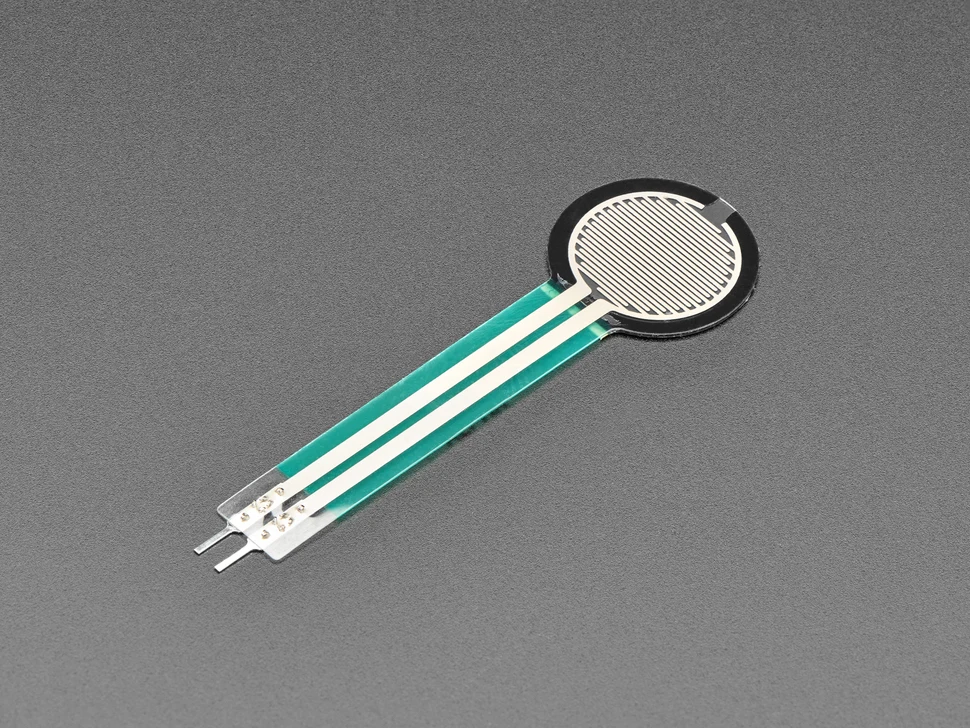
| Brand | Model / Series | Notable Features |
|---|---|---|
| SOUSHINE | Force Sensing Resistors | Custom shapes, low power, easy integration |
| Interlink | FSR 402 | Small size, affordable, flexible |
| SparkFun | FSR Series | Simple interface, good for prototyping |
| Adafruit | FSR Sensors | Reliable, easy to use, hobby-friendly |
| Tekscan | FlexiForce | High accuracy, wide force range, premium build |
| Flexiforce | FlexiForce | Thin, flexible, high repeatability |
| Sensitronics | FSR Series | Custom solutions, broad application range |
Each brand has something special to offer. SOUSHINE makes sensors with custom shapes. They are easy to use. Interlink has small and flexible sensors. SparkFun and Adafruit make sensors for beginners and hobbyists. Tekscan and Flexiforce focus on high accuracy. They also measure a wide range of forces. Sensitronics gives custom solutions for many uses.
Why Reliability Matters
Picking trusted brands for force sensing resistors is important. Reliable brands help devices work better and last longer. They also help people avoid problems from bad sensors.
Tip: Trusted brands test their sensors for strength and repeatability. They also check if sensors can handle tough places. This helps sensors give correct results even in hard conditions.
Here are some reasons why reliability is important:
- Trusted brands help keep cars and planes safe.
- Good force measurements help engineers fix mistakes.
- Quality sensors help find problems early and make repairs easier.
The table below shows what people want when choosing trusted brands:
| Criteria | Description |
|---|---|
| Durability | Sensors need to last long and handle rough use. |
| Environmental | Sensors should resist dust and water, especially in factories. |
| Form Factor | The size and shape must fit into many devices. |
| Repeatability | Sensors should work the same way every time. |
| Sensitivity | Sensors need to measure many different forces. |
| Cost | The price should match what the project needs. |
Trusted brands focus on these things. They make force sensing resistors that meet strict rules. This helps people trust the sensors in important jobs. When people pick trusted brands, they get sensors that work well, last longer, and help keep things safe.
What Makes Reliable Brands
Quality and Standards
Good brands want their products to be the best. They use strong quality checks to make sure sensors work right. People want sensors that work the same every time. Brands look at materials before making sensors. They test how much resistance the sensor has. They also check the first sensor before making more. These steps help brands make sensors that work well.
Here is how top brands check quality:
| Quality Control Process | Description | | Pre-Production Inspection | Makes sure materials are the same and can be tracked. | | Resistance Testing | Checks if resistance and activation levels are correct. | | First Article Verification | Makes sure the first sensor matches the design before making more. |
Brands that do these things earn trust from buyers. They help people get good force readings every time. People use these sensors for safety and good results.
Note: Brands that check quality have fewer bad sensors. This means users have fewer problems.
Product Range
Having many products helps brands meet many needs. Some brands make sensors for small things. Others make sensors for big machines. People can find sensors for robots, health tools, and gadgets. Brands make sensors in many shapes and sizes. This helps sensors fit in lots of products.
Brands also make sensors for different force levels. Some sensors feel light touches. Others can handle heavy things. This helps people pick the best sensor for their job. Brands with many choices are easy to notice.
- Brands with many products help people fix many problems.
- People can pick sensors for easy or hard jobs.
- More products mean more choices for engineers and builders.
Support and Service
Support and service are important for users. Good brands answer questions fast. They help people pick the right sensor. Brands give guides and help with problems. Some brands teach new users how to use sensors. Good support helps people use sensors without trouble.
Brands with good service make people trust them. People like brands that help them fix problems. Fast help means projects do not stop for long. Brands that care about service keep customers happy.
Tip: Pick a brand with good help and clear guides. This makes using force sensing resistors much easier.
Certifications
Certifications help people know which brands follow important rules. These rules come from groups that care about safety and quality. They also care about the environment. When a brand gets a certification, it means they check their products. It also means they follow rules from around the world.
Many engineers look for certifications like ISO 9001, CE, and RoHS. These rules help make sure sensors work well and are safe. ISO 9001 is about making good products. CE means the product is safe in Europe. RoHS means the product does not use some bad materials. Some brands have special certifications for medical or car use, like ISO 13485 or IATF 16949.
Brands with these certifications are easy to notice. They show their force measurement tools are high quality. Here is a table that lists some brands and their certifications:
| Brand | Certification |
|---|---|
| Tekscan | ISO 13485: 2016 Registered ISO 9001: 2008 Compliant |
| Ohmite | ISO 9001: 2015 Certified AS9100D Certified IATF 16949 Certified RoHS Compliant |
| General | ISO 9001 CE RoHS |
People can use this table to compare brands. They can see which brands have the right certifications for their work. For example, someone in healthcare might pick ISO 13485. Someone making electronics for Europe might look for CE.
Tip: Brands with more certifications often give better help. They also make more reliable products. Certifications help people trust the sensors they buy.
Certifications are not just for show. They help brands build trust with people. They also help users feel safe when using force sensing resistors. When a brand meets these standards, it shows they care about quality and safety.
Force Sensing Resistors Brand Guide
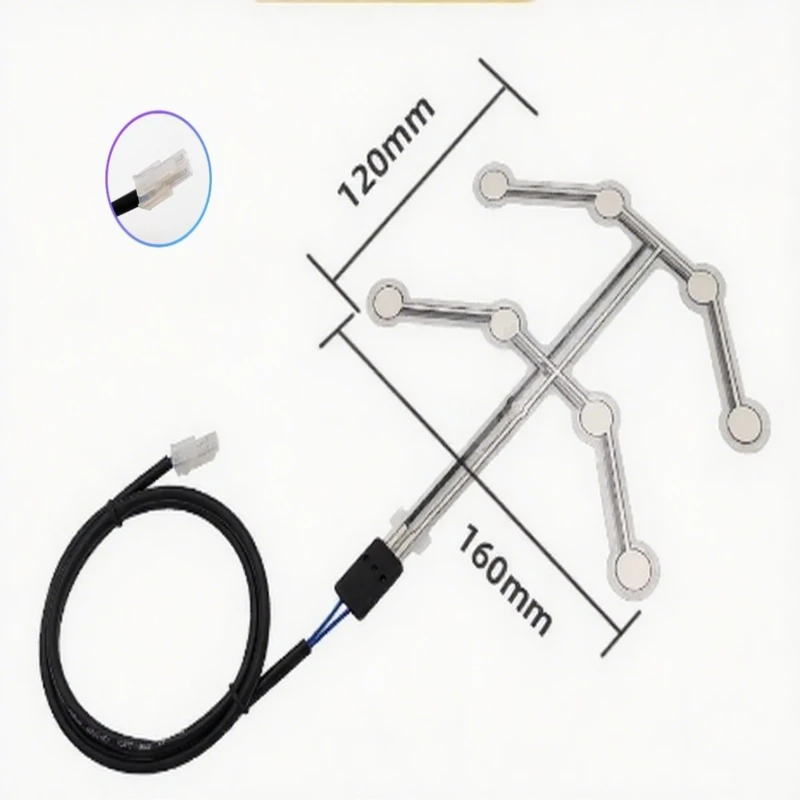
SOUSHINE
Key Products
SOUSHINE makes many types of force sensing resistors. They have sensors for lots of jobs. Some are made just for special projects. Others are for general use. They also make sensors for cars, hospitals, and factories. The Square Force Sensing Resistor FSR406 is good for very careful work. These sensors are used in motion systems, car sensors, and medical tools. They also help measure bite force and die pressure. SOUSHINE designs sensors for many needs. This makes them a good pick for engineers who want top results.
Features
SOUSHINE force sensing resistors are special because they are flexible and strong. You can get them in many shapes and sizes. This helps them fit into almost any device. They are thin, only 0.85mm thick. This makes them easy to add to things. They turn on fast, in less than 0.015ms. They also respond quickly, in under 10ms. They work in hot or cold places, from -40°C to +85°C. They do not use much power, so they save energy. They are built to last and can be used many times. These sensors can measure small forces, from 10g to 1000g. SOUSHINE also has sensors for very light touches. This is helpful for jobs that need to sense small forces.
Pros
- Many products for different jobs
- Can be changed for special needs
- Quick to turn on and respond
- Work well in hard places
- Easy to use in new or old systems
- Last a long time
Cons
- Not easy to find everywhere
- Might need help for special changes
Interlink Electronics
Key Products
Interlink Electronics makes many kinds of force sensing resistors. Their sensors come in lots of shapes and sizes. The main lines have different sensing ranges and uses. Some are cheap and work for many things. You can get them in many shapes and sizes. They are used in cars, robots, hospitals, and electronics people use every day. Interlink sensors help control cars, robots, and medical tools.
Features
Interlink Electronics builds sensors for lots of uses. Their sensors can measure many force levels. They are easy to put in different places. They do not cost a lot, so you can buy many for big projects. They come in many shapes and sizes for all kinds of devices. Engineers use Interlink sensors to measure force in HMI systems. They also use them in other jobs that need good results.
Pros
- Many choices for different jobs
- Good prices for big orders
- Easy to use and move around
- Great for testing and making new things
Cons
- Some types may not feel very light touches
- Might need extra help for special jobs
Tekscan
Key Products
Tekscan has many types of force sensing resistors. Their main products are for different jobs. Some are for mapping pressure. Others are for measuring force in many ways. They also make sensors for putting inside other things. Some products help stores check foot pressure. Others help study how people walk. Some tools check balance and how joints move. They even have sensors for animals and teeth. The FlexiForce A201 Sensor is one of their main products. It comes in different sizes and can measure different weights.
Tekscan sensors are used in hospitals, stores, sports, and animal care.
Features
Tekscan uses FlexiForce technology for very good force measurement. Their sensors can measure many force levels with great accuracy. They give the same results even when the load changes. They are good for important jobs that need the same answer every time. You can use them in many systems for checking pressure and force. Tekscan products help people measure both small and big forces. They always give results you can trust.
Pros
- Very accurate and always the same
- Many products for different jobs
- Good for light and heavy work
- Trusted by experts for careful measuring
Cons
- Cost more for the best models
- May need training for hard systems
SparkFun
Key Products
SparkFun has many force sensing resistor products. These sensors come in many shapes and sizes. Engineers use them to find touch and measure pressure. They also help find the center of force. The table below lists some popular choices:
| Product Name | Shape | Sensing Area | Min Pressure | Max Pressure |
|---|---|---|---|---|
| Force Sensitive Resistor – Small | Circular | 7.62 mm dia | 0.1 kg | 1 kg |
| Force Sensitive Resistor 0.5″ | Circular | 12.7 mm dia | 100 g | 10 kg |
| Force Sensitive Resistor – Square | Square | 44.45 x 44.45 mm | 100 g | 10 kg |
| Force Sensitive Resistor – Long | Rectangular | 6.35 x 609.6 mm | 100 g | 10 kg |
| FlexiForce Pressure Sensor – 25lbs | Circular | 2.54 mm dia | 0 g | ~11.34 kg |
| FlexiForce Pressure Sensor – 1lb. | Circular | 9.53 mm dia | 0 g | ~0.45 kg |
| FlexiForce Pressure Sensor – 25lbs. | Circular | 9.53 mm dia | 0 g | ~11.3398 kg |
| FlexiForce Pressure Sensor – 100lbs. | Circular | 9.53 mm dia | 0 g | ~45.36 kg |
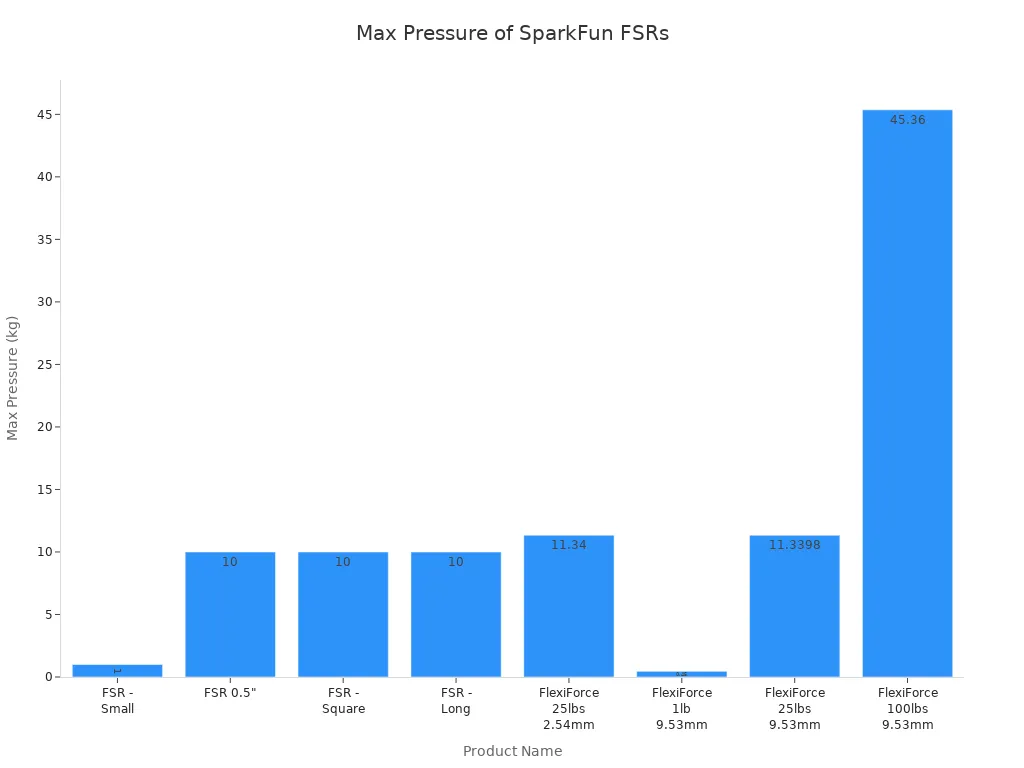
Features
SparkFun sensors help people find touch and measure force. They are used for feedback, safety, and motion sensing. These sensors can find the center of force and check for blocked liquids. SparkFun makes sensors that are easy to connect to simple circuits. Many students and hobbyists use SparkFun to learn about force sensing.
- Finds touch and pressure
- Measures force for safety and feedback
- Comes in many shapes and sizes
- Simple to use with basic electronics
Pros
- Many choices for different needs
- Easy for beginners to set up
- Good for testing and learning
- Low cost for schools and makers
Cons
- Not as accurate as top brands
- Not strong enough for heavy jobs
Adafruit
Key Products
Adafruit sells force sensing resistors for many projects. Their sensors come in many sizes and shapes. Adafruit gives lots of details and step-by-step guides. Many people use Adafruit sensors for DIY, robots, and art.
Features
Adafruit sensors measure force from 30g to 1000g. They give analog readings, so you see changes right away. The sensors have high resistance when not pressed. They respond in less than 1ms and last over 5 million uses. Adafruit sensors work in cold and hot places, from -30°C to +85°C. The company gives guides to help people start using them.
| Feature | Details |
|---|---|
| Force sensitivity range | 30g~1000g (0.3N~10N) |
| Force Resolution | Continuous (Analog) |
| Stand-off / Open unloaded resistance | >20MΩ |
| Force repeatability (single part) | 2% |
| Force repeatability (part to part) | 10% within a single batch |
| Response time | <1ms |
| Life cycle (without failure) | > 5 Million |
| Operating temperature | -30°C to +85°C |
Adafruit gives guides and tutorials. This helps beginners learn about force sensing.
Pros
- Lots of product details
- Fast response time
- Lasts a long time
- Helpful guides and tips
Cons
- Smaller force range than big sensors
- Not made for heavy-duty jobs
Flexiforce
Key Products
Flexiforce makes sensors that measure force very well. Their main products include standard, enhanced, and high-temperature sensors. Flexiforce sensors are thin and bendy, so they fit in small spaces. Many engineers use them in medical tools, robots, and machines.
Features
Flexiforce sensors measure force with good accuracy. They handle bigger loads and come in special shapes and sizes. The sensors use little power and work with simple circuits. Flexiforce products are only 0.008 inches thick. They last for over 3 million uses and work in hot or cold places, from -40°C to 85°C. These sensors work well even in tough places.
| Feature | Description |
|---|---|
| Form Factor | Ultra-thin, flat, and flexible |
| Measurement Capability | Measures compressive loads with good linearity |
| Load Capacity | Handles higher loads |
| Customization | Custom shapes and sizes available |
| Variations | Standard, enhanced, and high-temperature types |
| Power Requirements | Low power, simple circuitry |
| Thickness | 0.008 in. (0.203 mm) |
| Durability | ≥ 3 million actuations |
| Temperature Range | -40°C to 85°C |
- Flexiforce sensors work well in hard places.
- They last through many uses and keep measuring force right.
Pros
- Very accurate and repeatable
- Super thin and flexible
- Custom options for special jobs
- Strong in tough conditions
Cons
- Costs more than basic sensors
- May need special setup for best results
Sensitronics
Key Products
Sensitronics makes many products for different jobs. Their main items are force sensing resistors, linear potentiometers, and force-sensitive touchpads. They also make special sensors for unique needs. Many companies use these in cars, hospitals, electronics, and music tools.
| Flagship Products | Industries Used |
|---|---|
| Force Sensing Resistors | Automotive |
| Linear Potentiometers | Medical |
| Force-Sensitive Touchpads | Consumer Electronics |
| Custom Sensor Solutions | Musical Instruments |
Features
Sensitronics is known for making custom sensors and helping big companies. They make force sensing resistors in many shapes and sizes. Their team helps with electronics, software, and building things. Sensitronics has its own lab and factories to make sensors fast. They help people test ideas quickly with rapid prototyping. Their sensors work for small or big orders. Sensitronics has ISO9001:2008 with Design certification, which means they care about quality.
Sensitronics helps people build custom data systems. They also give special materials like ink blends and coated sheets for making sensors.
Pros
- Has many custom choices for force sensing
- Works for small or big orders
- Gives strong help with tech and engineering
- Makes new project samples quickly
- Has ISO certification for quality
Cons
- Custom sensors can take more time to get
- Some items may cost more than regular sensors
Force Sensitive Resistor Comparison
Performance
People want sensors that measure force well and give the same results each time. Each brand is good at something different. SOUSHINE makes sensors in special shapes and uses little power. Interlink has small and bendy sensors. Tekscan is very accurate and works for many force levels. SparkFun and Adafruit are easy for new users. Flexiforce and Sensitronics make strong sensors and special designs.
Here is a table that shows how the top brands compare:
| Brand | Sensitivity Range | Repeatability | Notable Features |
|---|---|---|---|
| SOUSHINE | 10g–1000g | ±10% | Custom shapes, low power |
| Interlink | Few grams–kg | ±6%–±50% | Small size, flexible |
| Tekscan | Wide (g–kg) | ±0.03%–±1% | High accuracy, premium build |
| SparkFun | 0.1kg–10kg | ±6%–±50% | Simple interface, prototyping |
| Adafruit | 30g–1000g | ±10% | Reliable, hobby-friendly |
| Flexiforce | Wide (g–kg) | ±0.03%–±1% | Thin, flexible, repeatable |
| Sensitronics | Customizable | ±6%–±50% | Custom solutions |
Tip: Engineers pick sensors that fit their project’s force range and how often they need the same answer.
Price and Value
Price is important when choosing a sensor. Some sensors are cheap and good for easy jobs. Others cost more but have better features. SOUSHINE and Interlink have low-cost choices for many uses. Tekscan and Flexiforce are more expensive but are very good for careful work. SparkFun and Adafruit are good for learning and testing.
Here is a table with price ranges and key attributes:
| Product Name | Price Range | Key Attributes |
|---|---|---|
| High density pressure detection sensor array | $135–$230 | 256-point matrix, 0.1mm resolution |
| FSR400 Intelligent Force-Sensitive Resistor | $4.20–$5 | ±3% linearity, medical-grade silicone |
| Resistive Film Pressure Sensor (MCP-H11-05KPP) | $2.99–$3.99 | 5mm sensing diameter, robotics use |
| Custom-made Thin-film Pressure Sensors | $60–$100 | Shape-customizable, automotive |
| FSR Seat Cushion Sensor | $5.42 | IP68 rated, 50kg max load |
| Original Film Pressure sensor (FSR400) | $9.50–$10 | Military-grade connectors |
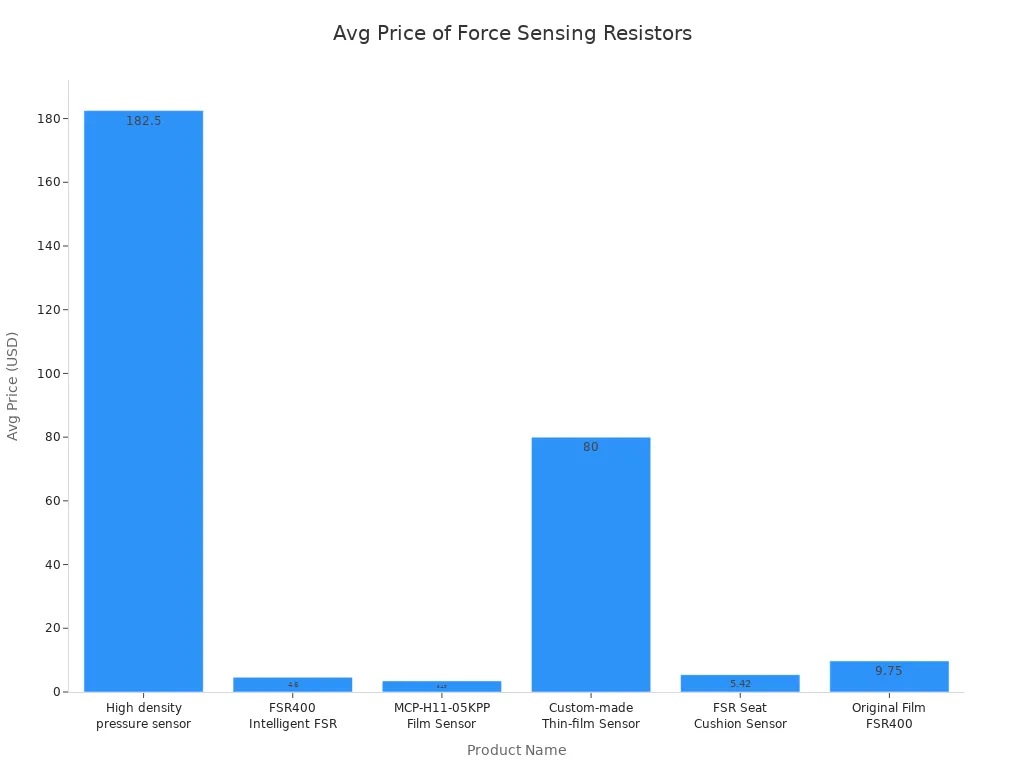
Note: Sensors that cost more often work better and have more features. Cheaper sensors are fine for simple jobs.
Applications
People use force sensing resistors in many areas. SOUSHINE and Tekscan are good for cars and hospitals. Interlink works well in medical tools and robots. SparkFun and Adafruit help students and hobbyists learn about force sensing. Flexiforce and Sensitronics are used for hard jobs that need special sensors.
- Hospital beds and wheelchairs need sensors that feel small forces.
- Robots use sensors to feel touch and move parts.
- Phones and gadgets use sensors to sense touch.
- Factories use sensors to control machines and motors.
- When you push harder, the sensor’s resistance goes down.
- Sensors help find out how much force or pressure is used.
- Many brands make sensors for touch control in devices.
People should choose a brand that fits their project’s force needs, money, and help needed.
Choosing the Right Brand
Application Needs
Every project has its own needs. When someone picks a force sensing resistor brand, they should start by thinking about where and how the sensor will work. For example, a sensor in a car seat faces different challenges than one in a game controller. Some sensors need to handle rough use. Others must fit into tiny spaces. The right choice depends on what the job asks for.
Here is a table that shows what to look for when matching a sensor to an application:
| Factor | Description |
|---|---|
| Durability | The sensor must handle repeated force and rough use. |
| Environment | The sensor should resist dust, moisture, and dirt. It must work in both clean and harsh conditions. |
| Form Factor | The size and shape must fit the device. Thin and flexible sensors work well in small spaces. |
| Repeatability | The sensor should give the same result each time for the same force. |
| Sensitivity | The sensor must detect the right range of force for the application. |
| Cost | The sensor should meet project needs without going over budget. |
A designer should ask: Does the sensor need to measure a light touch or a heavy press? Will it face water or dust? Does it need to last for years? These questions help narrow down the best brands for the job.
Budget
Money always matters in a project. Some brands offer sensors at a low price. Others cost more but give extra features or better results. A school project might not need the most expensive sensor. A medical device, though, might need a sensor that works every time, even if it costs more.
Here are some tips for matching a brand to a budget:
- Make a list of what the sensor must do.
- Compare prices from different brands.
- Think about the total cost, not just the price tag. Sometimes, a sensor that lasts longer saves money in the end.
- Look for brands that offer bulk discounts if the project needs many sensors.
Tip: Saving money is good, but never pick a sensor that cannot handle the force or the job’s needs.
Support
Good support makes a big difference. Some brands answer questions fast and help with setup. Others give guides, videos, or even live help. When a project gets stuck, strong support can save time and stress.
People should check if the brand has:
- Clear guides and manuals
- Fast answers to questions
- Help with picking the right sensor
- Online forums or videos
A brand with good support helps users get the most from their force sensing resistor. This support can turn a hard project into a smooth one.
Availability
When picking a force sensing resistor brand, think about how easy it is to buy. Not every brand is sold in every country or store. Some brands are found in many places. Others only sell in certain areas or for special jobs.
Many engineers and designers pick SOUSHINE, Interlink, SparkFun, Adafruit, and Tekscan. These brands are easy to find in online shops and electronics stores. You can also get them from local sellers. This means people can buy the sensors they need fast. They do not have to wait long or pay high shipping costs.
Tekscan, Interlink, SparkFun, and Sensitronics sell their products all over the world. Their sensors are used in healthcare, cars, and electronics. This helps companies and hobbyists find the right sensor for their work. SOUSHINE is also easy to get. Many engineers use SOUSHINE sensors for different jobs around the world.
Here is a simple table that shows how easy it is to find these brands:
| Brand | Online Stores | Local Distributors | Global Reach |
|---|---|---|---|
| SOUSHINE | Yes | Sometimes | Wide |
| Interlink | Yes | Yes | Wide |
| Tekscan | Yes | Yes | Wide |
| SparkFun | Yes | Yes | Wide |
| Adafruit | Yes | Sometimes | Wide |
| Flexiforce | Yes | Yes | Wide |
| Sensitronics | Yes | Sometimes | Wide |
People often need to buy force sensing resistors quickly. This is important when they have a deadline. Brands that are easy to find help users finish their projects on time. If a brand is hard to get, it can slow down the work. People might have to choose another sensor.
Tip: Before you start your project, check if the brand’s sensors are in stock at your favorite store. This helps you save time and avoid last-minute problems.
Some brands also make custom force sensors. These special sensors may take longer to arrive. But they give users the exact size or shape they need. If you want a custom sensor, ask the brand about how long it will take and how they ship it.
Trusted brands such as SOUSHINE, Interlink, Tekscan, SparkFun, Adafruit, Flexiforce, and Sensitronics all have their own special features. Some brands make sensors that bend or can be made just for you. Others are known for being very accurate or simple to use. Engineers use these sensors to sense touch, check force changes, or start actions in smart devices and machines. Picking the right brand for the job is very important. People should choose sensors that match what they need, last a long time, and have good help if there are problems. As new things like AI and IoT become more popular, picking a brand that keeps up with new tech will help every project do well.
FAQ
What is a force sensing resistor (FSR)?
A force sensing resistor changes its resistance when someone presses on it. People use FSRs to measure force or pressure in many devices.
How do people choose the right FSR brand?
They look at the sensor’s size, force range, price, and support. Trusted brands offer more choices and better help.
Can FSRs work in tough environments?
Yes. Many FSRs from top brands handle dust, water, and temperature changes. Always check the product’s specs before use.
Are FSRs easy to install?
Most FSRs have a simple design. Users can add them to circuits with basic tools. Some brands give guides for setup.
What industries use force sensing resistors?
People use FSRs in cars, hospitals, robots, and electronics. They help measure touch, pressure, or weight.
Do FSRs need special care?
FSRs last longer when users avoid bending or stretching them too much. Clean surfaces help sensors work better.
Can someone get custom-shaped FSRs?
Yes. Brands like SOUSHINE and Sensitronics offer custom shapes for special projects. Users can ask for help with design.
Where can people buy trusted FSR brands?
People find FSRs online, in electronics stores, or through local distributors. Many brands ship worldwide.


